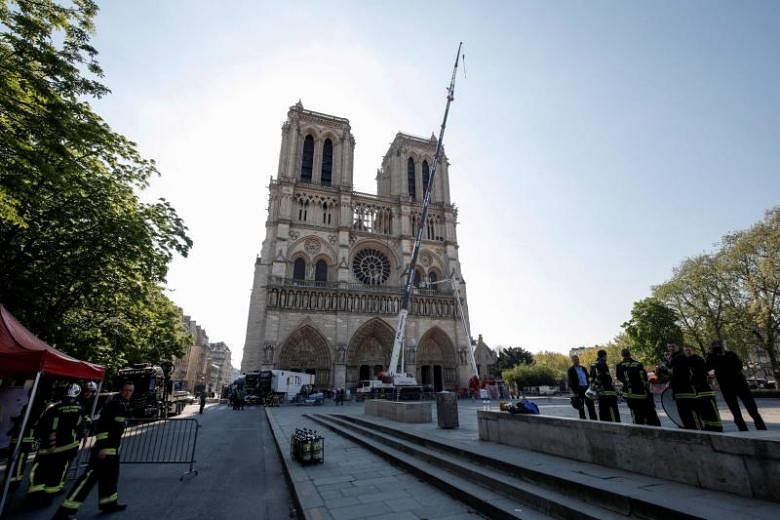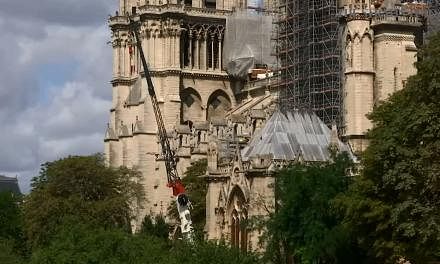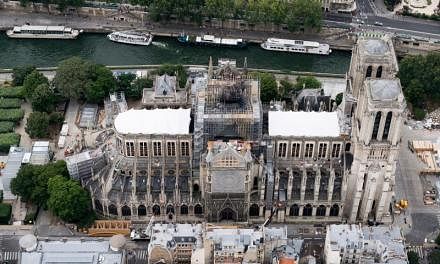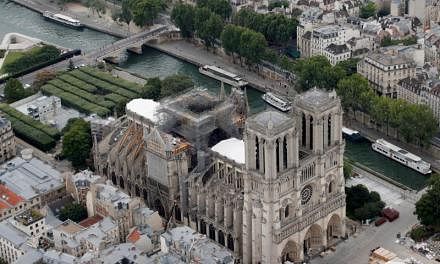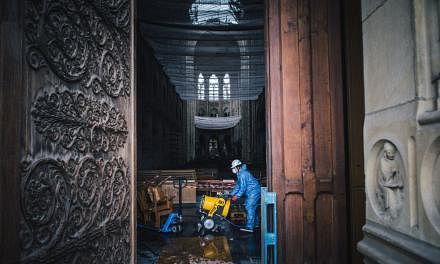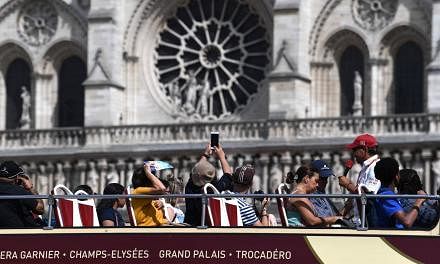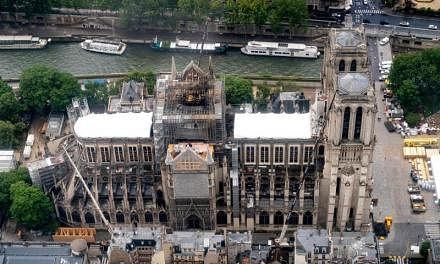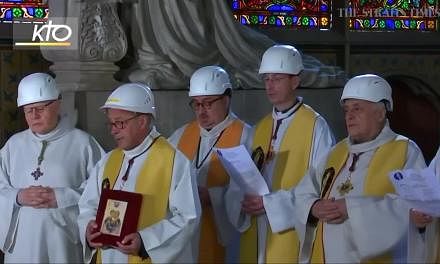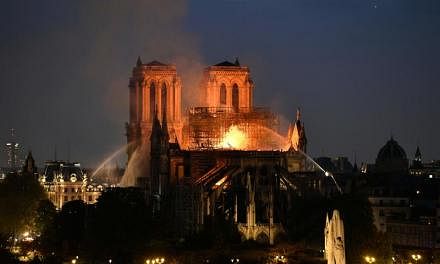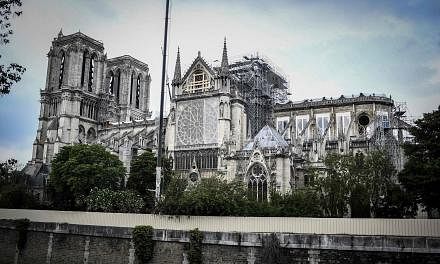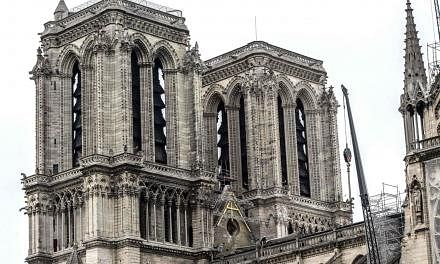PARIS (NYTIMES) - The architect who oversaw the design of the fire safety system at Notre-Dame acknowledged that officials had misjudged how quickly a flame would ignite and spread through the cathedral, resulting in a much more devastating blaze than they had anticipated.
The system was based on the assumption that if the cathedral ever caught fire, the ancient oak timbers in the attic would burn slowly, leaving ample time to fight the flames, said Benjamin Mouton, the architect who oversaw the fire protections.
Unlike at sensitive sites in the United States, the fire alarms in Notre-Dame did not notify fire dispatchers right away. Instead, a guard at the cathedral first had to climb a steep set of stairs to the attic - a trip Mouton said would take a "fit" person six minutes.
Only after a blaze was discovered could the fire department be notified. That means even a flawless response had a built-in delay of about 20 minutes - from the moment the alarm sounded until firefighters could arrive and climb to the attic with hundreds of pounds of equipment to begin battling a fire.
Those delays turned out to be devastating.
"I was stunned by the speed with which the oak in Notre-Dame burned," Mouton said. "Oak that old can't burn like a match. It's absolutely incomprehensible." Experts said two of the top officials on the project, Mouton and a former firefighter, Lieutenant-Colonel Régis Prunet, appeared to have miscalculated what was needed to protect such an unusual building.
Mouton was the architect in charge of Notre-Dame between 2000 and 2013, and in that position he oversaw a revamp of fire safety.
The designers were determined not to alter the attic with protective measures like sprinklers or fire walls. Instead, they said, the team banked on prevention and detection.
Two guards monitored the roof structure, day and night. The cathedral was covered in smoke and heat sensors. Three times a day someone went up to check that the system was working.
But that approach appears to have been flawed, beginning with the response to the first alarm at 6.20pm.
The guard, seeing no fire, gave the all-clear and came down.
By the time the second alarm sounded at 6.43pm and a guard climbed the stairs again, the fire was already a conflagration.
The call finally went to the fire brigade at 6.51pm.
